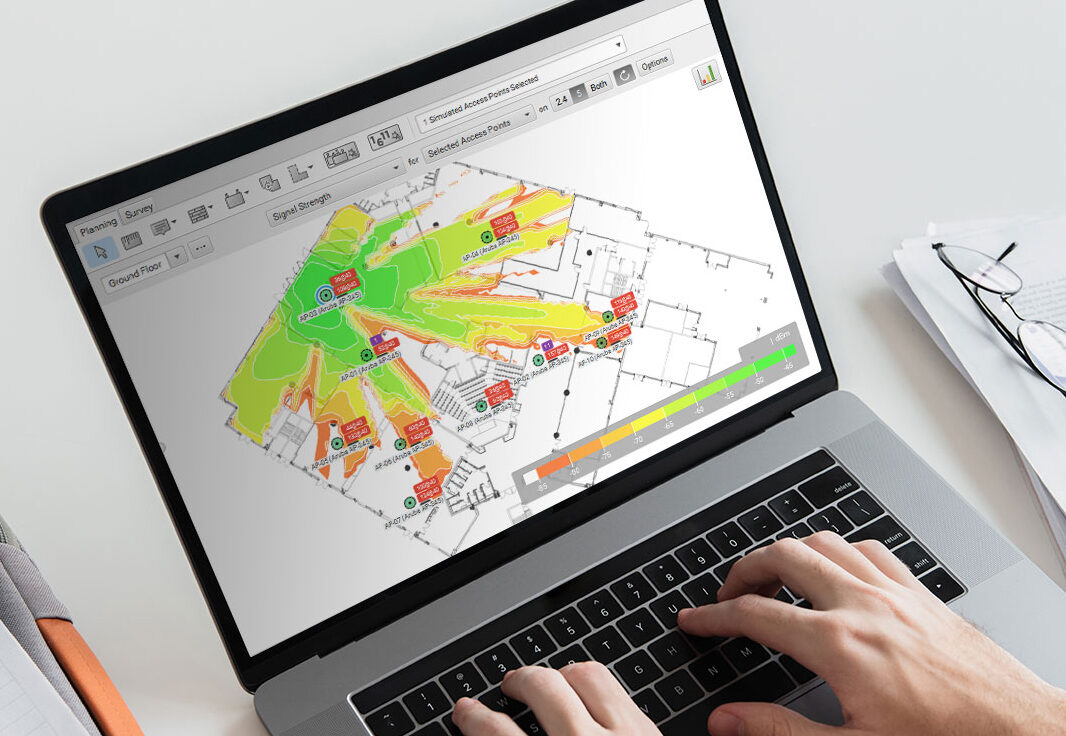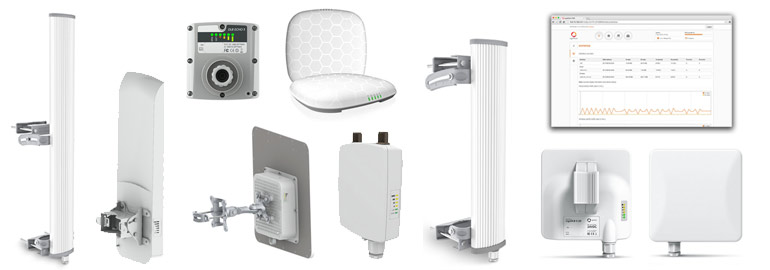
Your vision, our expertise
Need Help? Call Us Now
+920003681Secure Wi-Fi Solutions
We turn complex wireless projects into simple, dependable experiences. As your end-to-end WiFi partner, Armor Integrated plans, designs, installs, and manages indoor and outdoor networks that stay fast, secure, and stable when it matters most. From offices and hospitals to campuses, malls, factories, and public spaces, our job is to make connectivity feel effortless while the engineering does the heavy lifting.
A scalable and secure WiFi network is never an accident. It is the result of careful site surveys and the right access points and professionally deployed and managed. That is the standard we bring to every site, across every sector we serve.
Next generation WiFi solutions
What we deliver:
The secret to rock-solid WiFi is the survey. We use a mix of proven methods to understand your building, people, existing IT infrastructure, bandwidth required and constraints before we design anything.
WiFi Site Survey methods we use:

Predictive survey
We import your floor plans, set wall materials and heights, and model signal behavior to estimate access point count, locations, and channel plans. This is ideal for new builds or early planning and forms the first pass of a budget. Predictive results are later validated on site.
Passive survey
We walk your site with professional tools that listen to every WiFi signal. This reveals coverage, noise, and channel overlap from all access points in range, including neighbors and rogues. The output is a set of heat maps that show where the signal is strong, weak, or noisy.
Active survey
We associate to your network during the walk test to measure real throughput, retry rates, packet loss, and roaming behavior. Active tests uncover issues that simple “signal bars” never show, such as sticky clients or congested channels.
Spectrum analysis
Many WiFi problems are not WiFi at all. Using tri-band radios and a high-speed spectrum analyzer, we identify non-WiFi interference sources like microwaves, wireless cameras, or DF transmitters. This helps us select clean channels and stable power levels.
What you receive
- Calibrated floor plans and survey paths
- Heat maps for RSSI, SNR, channel overlap, roaming, and throughput
- Interference and utilization snapshots
- An install-ready design with AP placements, mounts, and cabling notes
- A capacity plan sized to real users, devices, and apps
Heat maps are visual proof that your network delivers the signal and performance you expect.

Designing for today and tomorrow: Wi-Fi 6E and Wi-Fi 7
Wi-Fi has moved beyond crowded 2.4 and 5 GHz. New devices and access points can use 6 GHz for wider channels, lower latency, and less interference. With Wi-Fi 7, performance steps up again.
What is new in Wi-Fi 7
Wi-Fi 7 adds wider 320 MHz channels, 4096-QAM modulation, and Multi-Link Operation that lets devices use multiple bands at the same time for higher throughput and more consistent latency. The Wi-Fi Alliance launched Wi-Fi Certified 7 in January 2024, which means enterprise-grade products are now shipping with a clear certification path.
 Automated Frequency Coordination for 6 GHz
Automated Frequency Coordination for 6 GHz
In places where standard-power 6 GHz is allowed, access points check in with a cloud coordination service called AFC. AFC assigns safe channels and power so Wi-Fi can run at higher power without interfering with incumbent services. Outdoor and high-power deployments benefit the most from this model. Your design and documentation must be AFC-ready.
What this means for your project
- Higher peak speeds and lower latency for voice, video, AR, and real-time apps
- Less channel congestion in dense buildings and venues
- Better resiliency, especially when Multi-Link Operation is enabled
The engineering behind a smooth WiFi experience

Frequently Asked Questions
1. What is the difference between indoor WiFi and outdoor WiFi solutions in Saudi Arabia?
Outdoor WiFi solutions, on the other hand, are engineered to withstand harsh Saudi weather conditions while delivering connectivity across stadiums, campuses, industrial zones, and smart city environments. They often use Ligowave PTP and PTMP links to connect multiple buildings or remote facilities over long distances. Both solutions begin with a professional WiFi site survey and heat map analysis to ensure capacity and performance are aligned with business needs.
2. Why is a WiFi site survey important before installing enterprise wireless networks?
Without a proper survey, even advanced technologies like WiFi 6E or WiFi 7 from Aruba, Cisco, or Ruckus can underperform. A survey ensures the right number of access points, proper placement, clean cabling, and correct wireless controller configurations, delivering consistent connectivity across all devices and applications.
3. What are the benefits of upgrading to WiFi 6E and WiFi 7 for businesses in Saudi Arabia?
- Higher speeds with wider 320 MHz channels.
- Multi-Link Operation (MLO) for smoother performance across multiple bands.
- Better support for high-density environments such as malls, airports, and universities.
- Lower latency for voice, video, AR/VR, and real-time applications.
- Future-proofing your enterprise wireless network for new devices and applications.
Vendors such as Ligowave, Aruba, Cisco, and Ruckus now offer WiFi 7 access points, making it the right time to plan an upgrade. Armor Integrated ensures smooth migration while maintaining compliance with Saudi regulations, including Automated Frequency Coordination (AFC) for outdoor 6 GHz deployments.
4. How do wireless controllers improve enterprise WiFi management and performance?
* Automatically optimizing channels and power levels.
* Enforcing WiFi security policies and guest access management.
* Providing analytics and monitoring through dashboards and heat maps.
* Ensuring seamless roaming and consistent performance across devices.
For Saudi businesses deploying WiFi 6E and WiFi 7 networks, controllers are essential to ensure the network remains reliable, secure, and scalable. Armor Integrated helps clients choose the right on-premises or cloud-managed wireless controller based on their environment.

